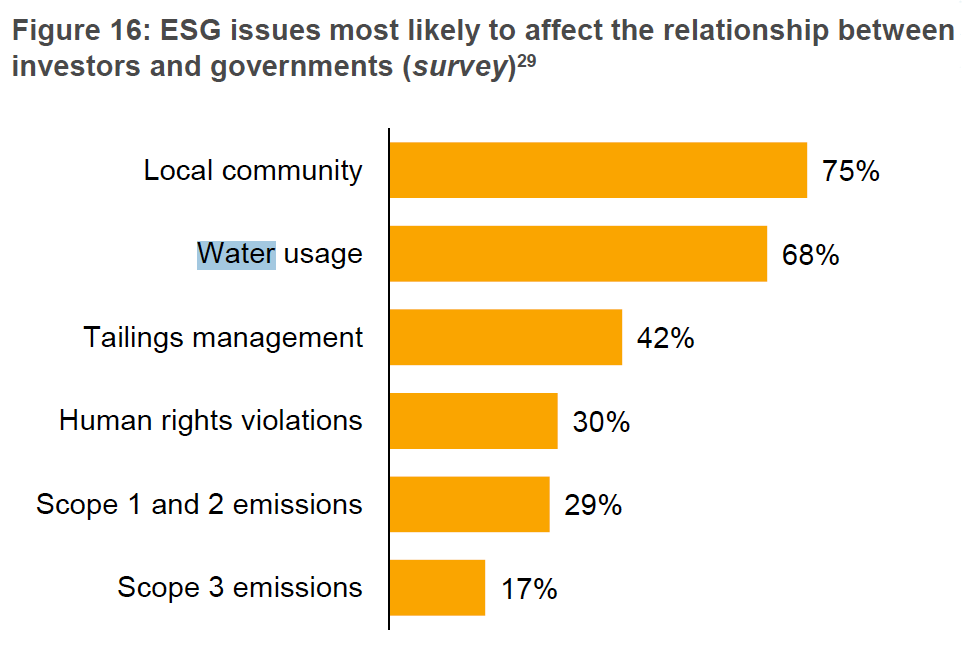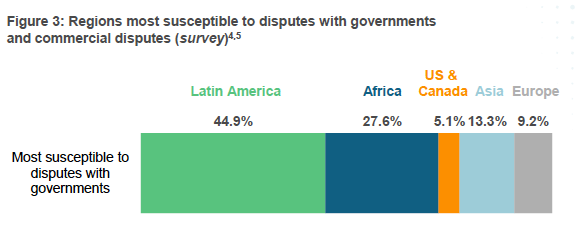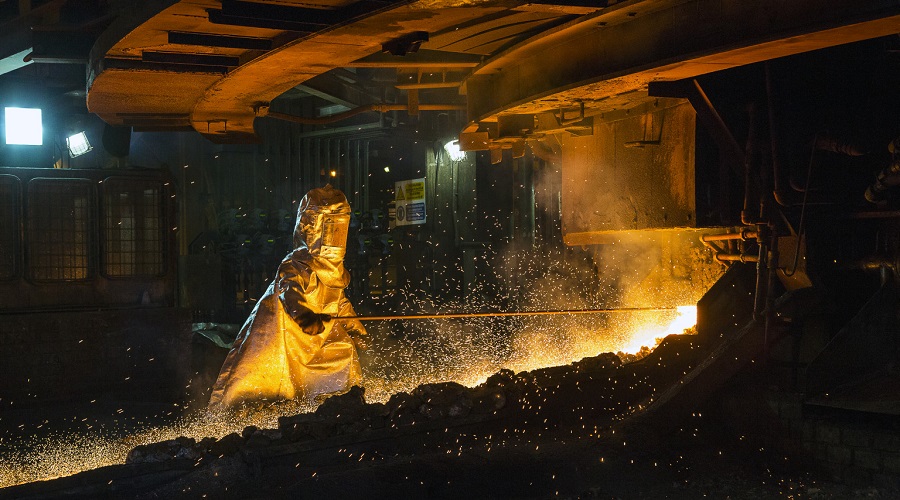A united front: Addressing ESG issues to ensure the America’s copper mining industry thrives

South American mining is significant for the global economy. And with around 40% of copper and 35% of lithium originating from the continent, the region’s mines are critical to the energy transition. But mining can be a water-intensive process.
Both brownfield and greenfield mines in the region face issues of water stress. How do we overcome the water challenges so we can secure the minerals we need for the energy transition?
We speak to Hubert Fleming, Senior Water Advisor – Advisian; Alexander Fortin, Global Director of Growth for Water – Worley; and Julian Sparks, Director of Technology & Studies for LATAM MM&M – Worley, to discuss how collaboration with partners and local stakeholders can streamline costs, improve sustainability and benefit local communities facing water scarcity over the coming years.
What do you see as the biggest challenge for the copper mining industry in the Americas at the moment in terms of water and environmental issues?
JS: There is a vast spider’s web of challenges relating to the quality, depth, and location of ore bodies which make it harder and harder to extract the minerals in a water- and environmentally-friendly way. The copper industry, particularly in South America, is facing multidimensional challenges across the majority of its assets, with water stress being one of the foremost of these challenges. This forms a key factor of other challenges faced by miners, namely community relations and ore contaminants (both of which are affected by and affect water).
HF: Expanding on that, as a commodity, copper is a more water-intensive product than most. Given that around 70% of copper supply comes from water-scarce areas – water scarcity is not the only issue facing miners, but it is the largest. The Americas are seeing a shift from oxide mining to sulphide mining, which generally sees an increased risk of contaminants – this means that even for the areas where water is not scarce, it is still a consideration.
How can we ensure collaboration between businesses, governments, and communities to make sure everyone benefits from mineral extraction across the Americas?
AF: Local communities are concerned about their air and water quality being affected by the mines. It then puts pressure on mines to build water treatment plants so there is a solution that benefits both parties [mine and city], both of which need clean water. We see a responsibility shift from the governments to the mines to keep all parties satisfied.
HF: That’s a great example. Another of our partners spent upwards of $40 million USD to create a wastewater facility to provide water for a city local to a project, under the proviso that half the wastewater could be used as feed water for the mine being built. It was a similar story during the construction of the Quellaveco mine in Peru – it was built with the community in mind. Cities need technology to provide clean water; our partners need water for the mine – it’s a win/win and we’re seeing this more and more. The mines recognize that if they are going to survive, they need buy-in from others, including from local communities.
JS: Yes. Huw’s exactly right and there are plenty of examples out there from Escondida to Quellaveco. Governments in the likes of Chile and Peru have the power to turn off groundwater supply to mines – they need to have water that they can rely on and this fits into the projects’ decision making as well when providing for local communities.
So, we’re seeing communities and mines collaborate to solve their water scarcity issues through a shared solution?
HF: Yes – but there is more to it as well. Separate projects based in the mountains are building desalination on the coast. Why? To make sure the water they are extracting up in the mountains doesn’t affect the communities downstream on the coast, between tens and hundreds of miles away. There is a virtual swap of water, with the understanding that they can’t take the water at the source and leave the people downstream hung out to dry.
What has caused the greater emphasis on community engagement and collaboration in more recent times? Has it been driven by business, communities, or governments?
JS: Often it’s the dialogue between communities that moves government. There is a massive, ongoing conversation.
HF: And this approach isn’t strictly Chilean or South American, this is how collaboration is happening around the world.
AF: Plus, there is good reason for this conversation. While rare, environmental disasters have happened in the past affecting things like river PH and water quality, so it is key they these lines of communication stay open.
It’s clear that the industry can’t ignore ESG pressures from home – are we still seeing the biggest pressures coming from governments in the regions being operated within, or from stakeholders at home?
HF: Ultimately, we’re missing a big point. Investment. Governments are often seen as driving ESG in their regions but in my experience, oftentimes the ESG emphasis comes from financing. Seldom do mining majors own 100% of the mine, there are webs of financial stakeholders and shareholders. Global banks apply their own ESG standards to the financing they provide, meaning there is a monetary aspect that drives ESG decision-making on these projects.

AF: I’d second that, and say that for the projects we’re involved in, we’re often the partner who conducts due diligence to make sure projects follow both ICF [code of ethics based on professionalism, collaboration, humanity, and equity] and the Equator principles [financial risk management principles]. And frankly, that’s a good framework.
Looking to the future, what more can be done to ensure collaboration over environmentalism in the space and what will Worley and Advisian be doing?
AF: Financing frameworks drive ESG principals, and as we evolve, requirements will become stricter. This will coincide with the trend we’re seeing of collaboration between miners and local governments, which is driven by communities and public opinion. Where we come in is on the study and feasibility side, making sure the mines work for businesses and other stakeholders, and making sure that they are protected against the risk of environmental disasters.
HF: To answer the second half of the question, in terms of what Worley and Advisian will be doing – we will continue to collaborate with partners, helping them from a risk-based perspective. We do water audits, water efficiency studies, optionality studies, some waste treatment and discharge studies. Worley and Advisian’s work lays in the study and engineering phase of projects, laying the foundations for success.

JS: We’re also driving innovation, especially in tailings. We’re working with miners on their tailings facilities [which they are obliged to remove]. It’s slow going because the previous generation technology means adding water to tailings, which is risky to stability and the water table. What we’ve done is innovate, create new technology to make the process safer environmentally by using less water and in some cases giving water back. This is what we will continue to do as we work with partners to build the mines and storage we need, in a way that won’t ruin the environment and water table for those around.
{{ commodity.name }}
{{ post.title }}
{{ post.date }}

Comments